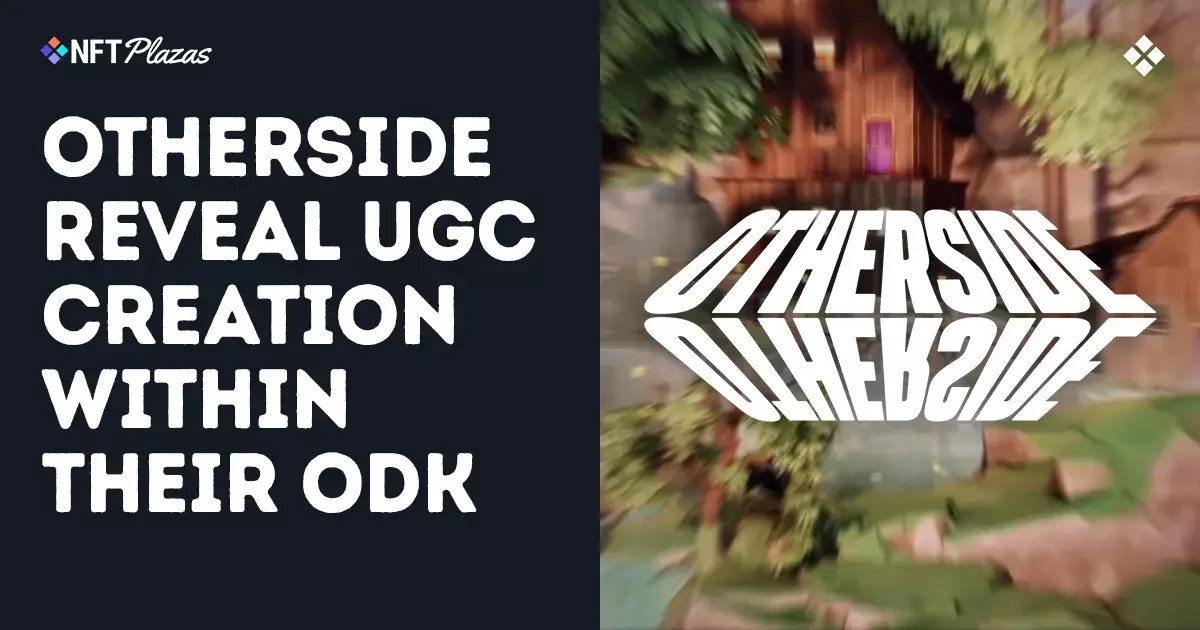The evolution of the gaming industry has witnessed radical transformations, primarily due to advancements in technology. Among these, the Otherside metaverse seems poised to lead the charge into a new realm of interactive gaming. At the core of this endeavor is its emphasis on user-generated content (UGC). The recent release of the Otherside ODK (Open Development Kit) empowers players to create assets ranging from characters to elaborate environments, effectively reimagining the player-developer relationship. This shift is profound, allowing gamers not only to engage in gameplay but also to become integral creators within the game world. The time-lapse video shared by a user captures this beautifully, reflecting the artistry and creativity that can stem from a collaborative community.
Decentralization: A Double-Edged Sword
With the ODK, Otherside elevates decentralization to unprecedented levels. Players will have the autonomy to generate, buy, and sell in-game items, imbuing them with real economic potential. This aspect is not merely anecdotal; it allows players to monetize their creations in a marketplace fueled by the $APE token. However, while this decentralization sounds progressive, it raises questions regarding quality control. Can a game thrive when every individual can contribute content, regardless of their skill or intent? It’s a potential pitfall that the developers need to navigate carefully, as a deluge of low-quality assets could stifle the overall experience.
Community vs. Control: Striking a Balance
The gamble with user-generated content lies in how effectively it can foster community while maintaining some level of curated quality. Otherside’s ambitious design, blending elements of MMORPGs with Web3 technologies, must navigate this tightrope. Players’ ability to shape and own their environment signifies a monumental shift, but there’s an inherent challenge in ensuring that this diverse input meets a certain standard. It’s imperative for game developers to embrace community contributions while laying down a framework that filters out redundancy and maintains the game’s integrity.
Real-Time Interaction: A New Social Sphere
Another exciting prospect for Otherside is the claiming of real-time interaction among over 10,000 players in a singular environment. This feature enables dynamic experiences that traditional MMORPGs can only dream of. Players engaging simultaneously creates a vibrant social atmosphere, reminiscent of physical gaming conventions but expanded into a digital space. This social dimension is central to the appeal of Otherside, transforming isolated gaming sessions into collective experiences. In a time where social interaction is prone to segregation, fostering real-time connections in gaming represents a significant leap forward.
The Role of Big Names in Innovative Ventures
Otherside is developed through a collaboration with notable entities like Yuga Labs and Animoca Brands, signaling a serious investment in the metaverse’s potential. Their combined expertise could bring a sense of authority and reliability to a space that often feels chaotic and unpredictable. While partnerships can inject vitality into projects, they also bring expectations. The weight of scrutiny directed at Otherside to deliver on its promises will be immense. With high expectations comes the responsibility to innovate, and the pressure to reconcile creativity with commercial viability can either catalyze success or lead to disillusionment.
Otherside is firmly positioned at the intersection of creativity and commerce in the gaming universe. Its potential to harness decentralization and community engagement while navigating the pitfalls of uncontrolled content generation will be crucial. Although it stands as a beacon of innovation, only time will reveal whether it can indeed chart a new course in the gaming industry.

